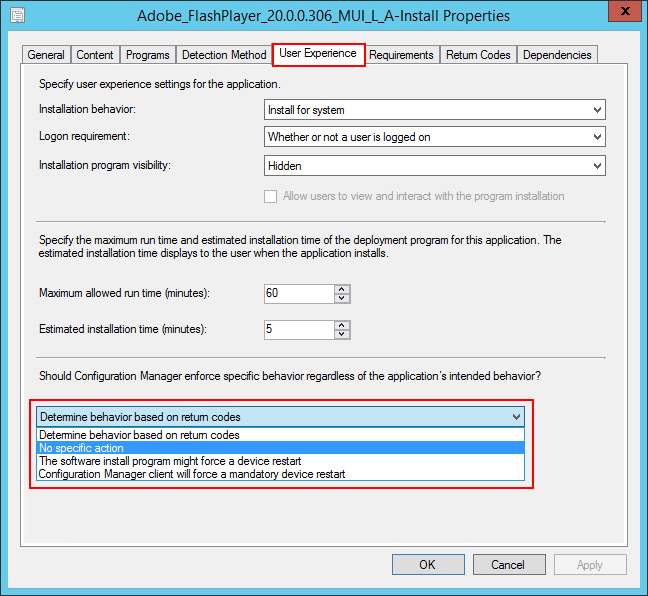

- #ALLOW USERS TO RUN THE PROGRAM INDEPENDENTLY OF ASSIGNMENTS SCCM SOFTWARE#
- #ALLOW USERS TO RUN THE PROGRAM INDEPENDENTLY OF ASSIGNMENTS SCCM DOWNLOAD#
The second way to implement a package is the “ Application” model.

Right-Click the package then selects “ Distribute Content”Ĭlick Add and select the Distribution Points.When all the programs needed are created and configured, the package can be copied on the Distribution Points. Right-click the program and select “ Properties”Īfter running: Select the action required.If a reboot or a log-off / logon are required, set the properties of the program. Select the platforms on which the package can be installed Program can run: Whether or not a user is logged on Right-click the package and select “ Create Program”.Programs are actions to perform, like installation, uninstallation… It’s now time to associate different programs to the package.
#ALLOW USERS TO RUN THE PROGRAM INDEPENDENTLY OF ASSIGNMENTS SCCM DOWNLOAD#
Select “ Automatically download content when packages are assigned to distribution points” Select “ Disconnect users from distribution points” Select “ Copy the content in this package to a package share on distribution points” Select “ Enable binary differential replication” In case you want the sources of the package to persist in the client cache (for example if the package has an Active Setup which launch an auto-repair), select “ Persist content in the client cache”
#ALLOW USERS TO RUN THE PROGRAM INDEPENDENTLY OF ASSIGNMENTS SCCM SOFTWARE#
It’s possible to reinstall it from the Software Center. With the “ Package” model, the installation package is installed a single time on each machine targeted and is never reevaluated after. That way must be used, for simple packages, without prerequisites or launch conditions. It’s the easiest and fastest way to implement a package. The first way to implement a package is the “ Package” model. The SCCM Repository can contain for example the following folders.įor example, every package can be copied under: Installation packages must be copied in a repository on the SCCM server.


“Manufacturer” and “Application” must be without spaces.“ApplicationForXXXX” if specific platform/settings or “Application” if generic.Manufacturer_ApplicationForXXXX_Version_Language_PackageType_PackageVersion Let’s define a naming convention for the installation package: Here is the global process with the “Package” model, but the process is the same for applications. There are 2 ways to implement a package in SCCM: the “ Package” model (the easiest and fastest way), and the “ Application” model (more powerful, with prerequisites management, conditions…). In prerequisite, the package must have been created and copied in the SCCM repository. Here is the global process to implement and distribute a package to user’s workstations.


 0 kommentar(er)
0 kommentar(er)
